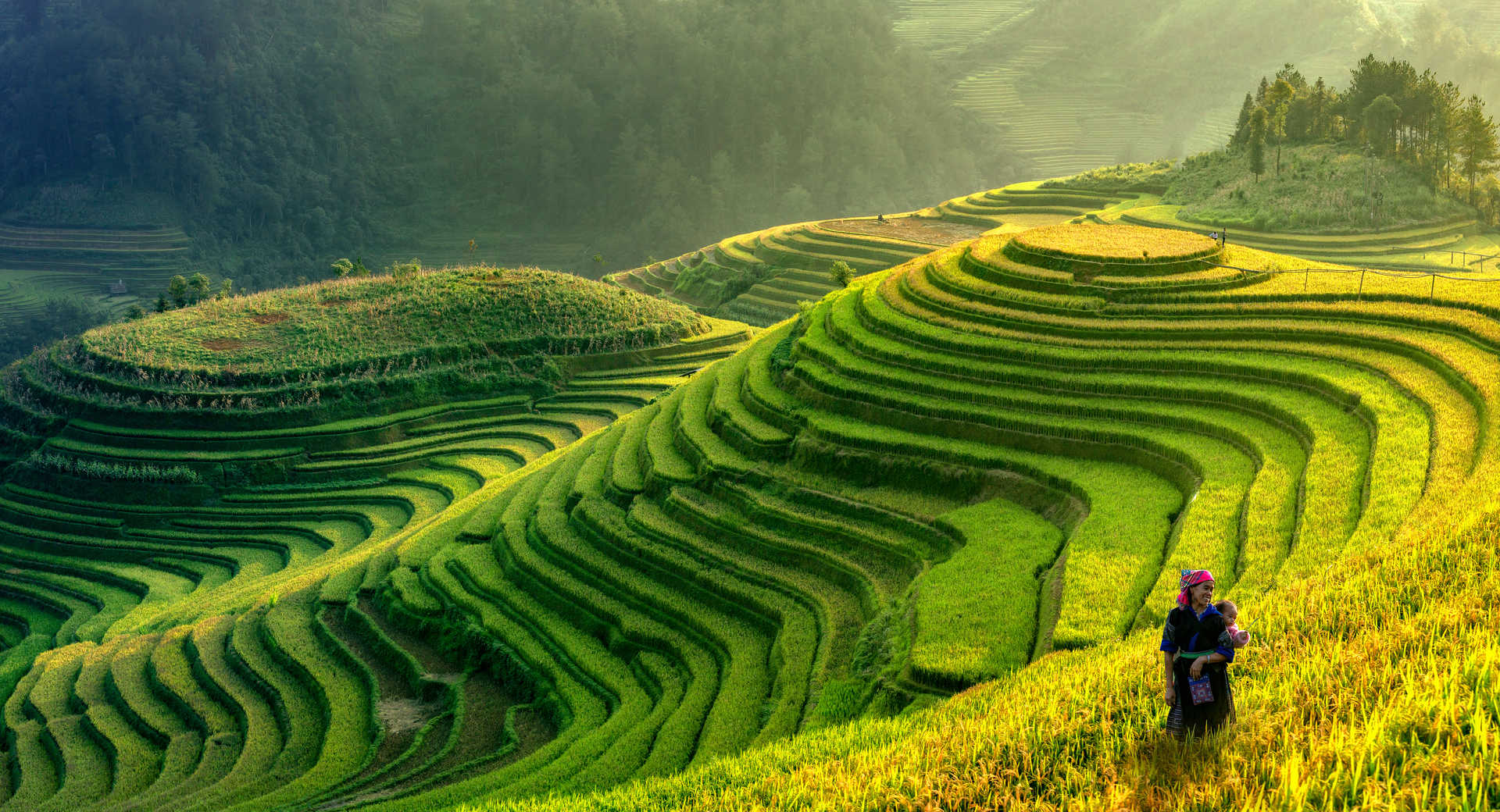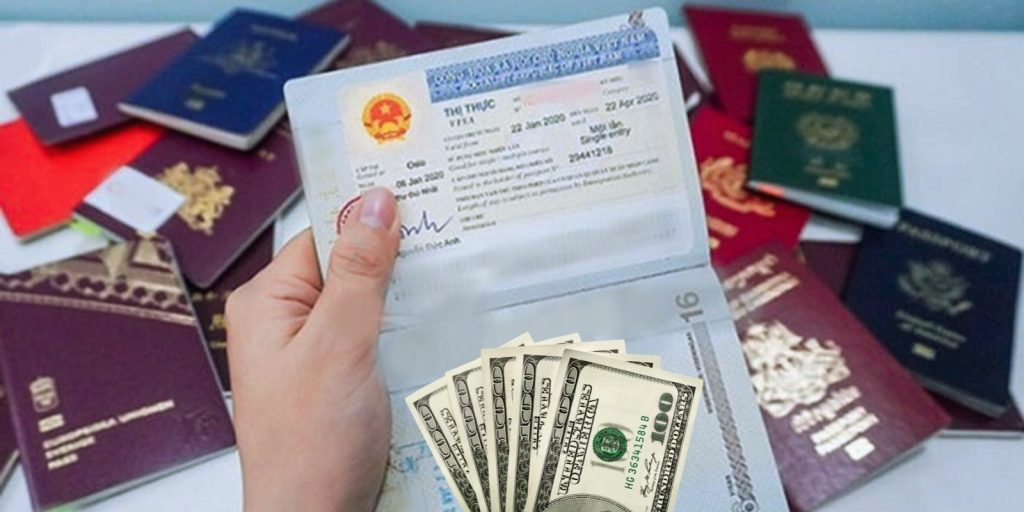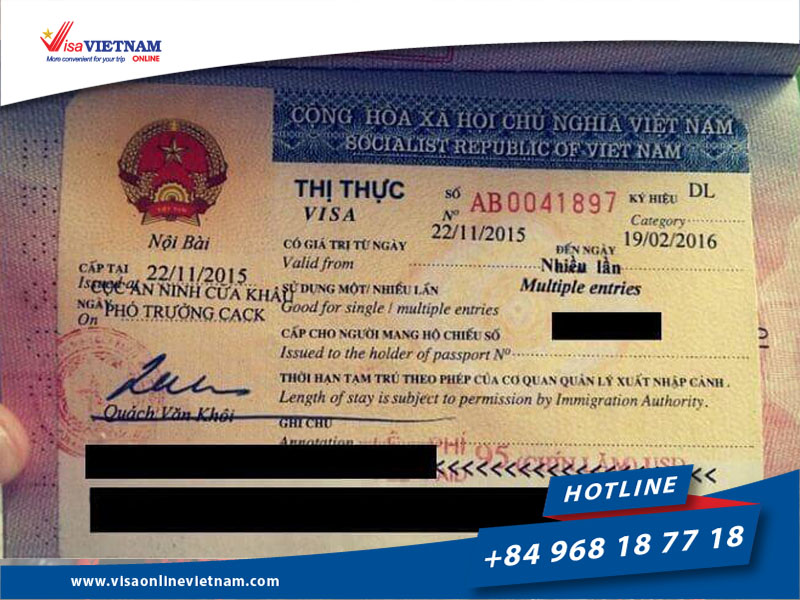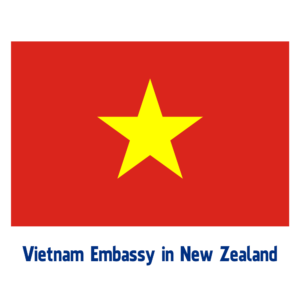
Step-by-Step Vietnam Visa on Arrival Application from Bangladesh
Vietnam visa on Arrival in Bangladesh has become an increasingly popular option for Bangladeshi travelers. With its stunning landscapes, rich culture, and delicious cuisine, Vietnam is attracting more tourists than ever. This detailed step-by-step guide aims at helping you navigate through the visa application process efficiently, so you can focus on enjoying your adventure in Vietnam.
Introduction to Vietnam Visa on Arrival

The Vietnam visa on Arrival for Bangladeshi citizens is a convenient and accessible way to enter Vietnam. This option allows travelers to apply for a visa online before their trip and collect their visa upon arrival at one of the international airports in Vietnam. It is beneficial for those who prefer a hassle-free option rather than dealing with the lengthy consulate visa application process.
Traveling from Bangladesh to Vietnam is incredibly rewarding, and securing your Vietnam visa on Arrival in Bangladesh will pave the way for a seamless travel experience. In this section, we will discuss the eligibility criteria, advantages, and essential requirements for obtaining a visa on arrival.
Eligibility for Bangladeshi Citizens
Bangladeshi nationals can avail of the Vietnam visa on arrival under certain conditions. Understanding these criteria is essential for a successful application. Travelers must note the following:
- Valid Passport: Your passport should be valid for at least six months beyond your intended departure date from Vietnam. Furthermore, it should have at least one blank page for visa stamps.
- Purpose of Visit: The visa on arrival is typically issued for tourism and business purposes. Ensure that your travel intent aligns with the allowed categories.
- Entry Points: To utilize the Vietnam visa on arrival, you must enter Vietnam through one of the designated international airports, namely Noi Bai International Airport (Hanoi), Tan Son Nhat International Airport (Ho Chi Minh City), and Da Nang International Airport (Da Nang).
Advantages of a Visa on Arrival
Opting for a Vietnam visa on arrival for Bangladesh brings a lot of convenience. Here are some advantages that come with this method:
- Simplified Application: The process is mainly done online, saving you time compared to traditional applications.
- Flexibility: Obtain your visa upon arrival in Vietnam, allowing you to make last-minute travel plans.
- Affordable: The overall costs associated with the visa on arrival are often lower than those of consulate visa applications.
- Ease of Process: There’s no need to mail your passport or documents; you can complete the application process from the comfort of your home.
Overall, understanding the eligibility requirements and advantages will prepare you for the subsequent steps in the visa application process.
Required Documents for Vietnam Visa on Arrival from Bangladesh

Before you commence your Vietnam visa on arrival application, it’s essential to gather all the required documents to ensure a smooth process. Below are the necessary documents that you will need to prepare:
Passport Requirements and Validity
Your passport plays a crucial role in your application. Here are the specific requirements related to your passport:
- Validity: Your passport must have a minimum validity of six months. It’s advisable to renew your passport if it is close to expiring to avoid any issues during your trip.
- Blank Pages: Make sure to have at least one or two blank pages in your passport for stamping your visa upon arrival.
- Photocopy: It’s also wise to have a photocopy of your passport, which can be useful for record-keeping and in case of loss.
Passport Photo Specifications
An essential requirement for your Vietnam visa on arrival for Bangladeshi citizens is the passport photo. Here’s what you need to know:
- Recent Photo: Your photo should be taken within the last six months to ensure it resembles your current appearance.
- Size and Background: The photo must be 4×6 cm (or 2×2 inches) and have a white background. Ensure you are facing the camera and not smiling.
- Quality: The photo should be clear and of high quality, preferably taken by professional photography services if you want to avoid any issues.
By ensuring that you meet these specifications, you’ll enhance your chances of a hassle-free visa application experience.
Completed Visa Application Form
You will need to fill out a visa application form accurately. Here are the key points:
- Access the Form: The visa application form can be found on various travel agency websites or official visa approval services. Ensure that you download the correct form for a Vietnam visa on arrival.
- Information Accuracy: Provide complete and accurate information, including your full name, nationality, passport number, dates of travel, and contact details.
- Double-check Your Entries: Mistakes or discrepancies on the application form can lead to delays or even denial of your visa. Always review your application thoroughly before submission.
Fulfilling these document requirements is vital to avoid any complications during the visa approval process.
The Visa Application Process: Step-by-Step Guide

Understanding how to get your Vietnam visa on arrival through a clear, step-by-step process will save you time and effort. Here’s how you can navigate through this procedure effectively:
Online Application and Pre-Approval
The first step in your visa application is submitting the application online. Follow these guidelines:
- Select a Credible Service: Choose a reliable visa approval service to ensure your application is handled professionally. Be cautious of scams and verify the agency’s reputation.
- Fill in the Application Form: As mentioned previously, complete the visa application form accurately. You might need to provide details such as your travel dates, purpose of visit, and accommodation details in Vietnam.
- Payment: After submitting your application, make the necessary payment for the visa approval letter. Payment methods usually involve credit cards or PayPal via the agency’s secure portal.
The pre-approval process typically takes around 2 to 5 business days, so ensure that you apply in advance of your travel dates.
Preparing for Arrival at the Airport
Once you receive your visa approval letter, there are things to prepare before heading to Vietnam:
- Print the Approval Letter: Make sure to have a printed copy of the visa approval letter, as you will need to present it upon arrival in Vietnam.
- Prepare Additional Documents: Carry your passport, passport-sized photos, and any other documents required like hotel reservations.
- Know the Visa Fees: Familiarize yourself with the fees required at the airport for processing your visa. Reception desks for visa on arrival can usually be found near the immigration control area.
With everything in order, you’ll find the arrival process a breeze.
Fees and Costs Associated with the Visa on Arrival

While the Vietnam visa on arrival for Bangladesh can be advantageous, it’s important to be aware of the costs involved. Below is a breakdown of the key fees associated with the visa on arrival application:
Visa Application Fees
The initial fee usually involves paying for the visa approval letter. Here’s what you need to know:
- Costs Vary: The fees depend on the type of visa you require—single entry versus multiple entry—and the duration of your stay.
- Typical Costs: Generally, the fees range from $10 to $30 for a single entry visa and can be higher for additional entries. Ensure you check the exact fees with the service provider.
- Offshore Payments: Be prepared for offshore payment processing fees that some agencies may impose when making your payment online.
Understanding these fees will help you budget for your Vietnam trip effectively.
Airport Handling Fees and Other Charges
Upon arrival in Vietnam, there are additional costs that you should be aware of:
- Landing Fees: When presenting your documents at the airport, an additional airport handling fee is required, usually ranging between $25 to $50 depending on the type of visa.
- Photo Fees: If you don’t carry a passport-sized photo, you may have to pay an extra fee for a photo taken at the airport.
- Extra Services: Some travelers opt for services that expedite visa processing at the airport, which may incur additional charges.
Being budget-conscious will allow you to manage your expenses effectively and ensure a smooth transition upon your arrival.
Frequently Asked Questions (FAQs) about Vietnam Visas
As you navigate through the visa application process, you may have several questions. Here are answers to some frequently asked questions regarding Vietnam visas:
Visa Validity and Extensions
A crucial aspect of your visa is understanding its validity:
- Typical Duration: Most tourist visas are valid for 30 days or less, depending on the type you apply for. Make sure you check the specifics in the approval letter.
- Extensions: If you wish to stay longer than your visa allows, extensions are available but require application through local immigration offices, which may involve additional fees.
- Stay Within Legal Limits: Overstaying can lead to fines or even bans from returning to Vietnam, so it’s essential to keep this in mind.
Multiple Entry Visas vs. Single Entry Visas
Depending on your travel plans, understanding the difference between types of visas is necessary:
- Single Entry Visa: Allows entry into Vietnam once. Ideal for travelers who plan to spend their entire duration within the country.
- Multiple Entry Visa: Permits travelers to leave and re-enter Vietnam within the validity period. This option is beneficial for those planning to visit nearby countries during their trip.
- Cost Implications: Typically, multiple entry visas incur higher fees than single entry visas, so factor this into your budget.
Understanding these aspects will help you choose the most suitable visa option based on your travel itinerary.
What to do if your Visa is Denied
In the unfortunate event of a visa denial, here are steps you can take:
- Review the Denial Letter: Understand the reasons stated in the letter to address any potential issues in future applications.
- Contact Your Visa Provider: If your visa was processed through a service, reach out to them for clarification and assistance in the next steps.
- Reapply: If the situation permits, gather the necessary documents and address previous concerns to apply for a new visa.
Navigating through a visa denial can be disheartening, but staying composed and following these steps will help you move forward.
Travel Insurance and its Importance
While preparing for your travel to Vietnam, it’s critical to consider the importance of travel insurance. Here are some highlights:
Recommended Insurance Providers
Choosing the right insurance provider can make all the difference. Consider reputable companies such as:
- World Nomads: Known for covering adventurous activities.
- Allianz: Offers comprehensive travel coverage and easy claims processes.
- SafetyWing: Popular among digital nomads, providing affordable long-term coverage.
Research policies to find one that best suits your travel needs.
Coverage Requirements for Vietnam
When seeking travel insurance, it’s important to ensure that you have the appropriate coverage for your trip:
- Medical Coverage: Emergency medical expenses should be sufficiently covered, as healthcare costs can rise unexpectedly.
- Trip Cancellation: Policies that include trip cancellation can help you recoup costs in case unforeseen events arise.
- Personal Liability: Coverage for personal liability is also vital, protecting you from claims made against you for any damages or incidents.
Adequate travel insurance coverage will ensure peace of mind during your travels, allowing you to focus on enjoying every moment in Vietnam.
Things to Note Before Your Trip to Vietnam
As you finalize your travel plans, consider these essential notes to enhance your overall experience in Vietnam:
Currency Exchange and Local Payment Methods
Understanding local finance practices is fundamental, so here’s what to bear in mind:
- Currency: The official currency in Vietnam is the Vietnamese Dong (VND). Familiarize yourself with the current exchange rates before you travel.
- Currency Exchange: Many airports, banks, and hotel lobbies offer currency exchange services, but rates might vary. Consider using authorized exchange bureaus for better rates.
- Cash vs. Card: While credit cards are accepted in many areas, cash is often preferred in local markets and smaller establishments. Always carry some local currency with you for convenience.
This understanding will facilitate smoother transactions during your stay in Vietnam.
Transportation Options in Vietnam
Vietnam boasts a variety of transportation options making it easy for travelers to navigate through the country. Here’s a brief overview:
- Motorbikes: Popular in Vietnam, you can rent motorbikes to explore at your own pace. Be sure to wear a helmet and familiarize yourself with local traffic laws.
- Buses and Trains: Public buses and trains are available for traveling between major cities. They are usually affordable, bearing in mind your time and comfort requirements.
- Ride-Hailing Apps: Services like Grab are widely used in cities and can be a safe and convenient way to get around.
Familiarizing yourself with local transport options facilitates easy navigation, making your travels more enjoyable.
Preparing for Your Trip: Packing Essentials and Tips
As you gear up for your visit to Vietnam, a well-planned packing list will make a significant impact on your experience. Below are some considerations:
Essential Documents and Medications
Make sure you have all the necessary documents and medications ready:
- Documentation: Carry a printed copy of your visa approval letter, travel insurance details, copies of your passport, and hotel reservation confirmations.
- Medications: Bring along any personal medications you need, as well as a small first-aid kit for minor health concerns. If you’re on prescription medications, consider carrying a copy of the original prescription as well.
- Traveling with Kids: If you’re traveling with children, ensure you bring any necessary documentation and medications for their specific needs.
Getting these essentials in order can save you from stress during your trip.
Packing List for Different Seasons in Vietnam
Vietnam’s geographical diversity means that weather conditions vary throughout the year. Here’s how to pack based on the season:
- Winter (December to February): The north can be chilly; bring layered clothing, warm jackets, and scarves.
- Summer (March to August): For the sultry summer, lightweight, breathable clothing, hats, and sunscreen are essentials.
- Rainy Season (September to November): A reliable waterproof jacket or poncho is crucial, along with sturdy footwear to navigate through the rain.
Planning your wardrobe according to the expected weather conditions will help enhance your comfort during your travels.
Exploring Vietnam: Top Destinations and Activities
As you plan your itinerary, exploring Vietnam’s wonders can be an exciting journey. Here are must-visit destinations and activities:
Popular Tourist Spots and Hidden Gems
Vietnam offers a blend of well-known attractions and hidden gems worth visiting:
- Hanoi: The vibrant capital hosts the majestic Hoan Kiem Lake and the historical Old Quarter, with captivating street food experiences.
- Halong Bay: A UNESCO World Heritage site known for its stunning limestone karsts and emerald waters–consider taking an overnight cruise for an unforgettable experience.
- Phong Nha-Ke Bang National Park: Famous for its stunning caves and eco-tourism opportunities, it’s a paradise for nature enthusiasts.
- Mekong Delta: Experience life along the Mekong River with boat tours through floating markets, traditional villages, and scenic landscapes.
- Hoi An: A city rich in history with charming streets and lantern-lit evenings, making it an idyllic place for exploration and relaxation.
Including a blend of popular attractions and off-the-beaten-path destinations will enrich your travel experience.
Cultural Experiences and Local Traditions
Delving into local culture can make your journey in Vietnam truly memorable. Consider these experiences:
- Cuisine Sampling: Don’t miss out on local delicacies like Pho, Banh Mi, and fresh seafood. Engaging with local street vendors can provide an authentic taste of Vietnamese cuisine.
- Traditional Festivals: Depending on the time of your visit, participate in local festivals such as Tet (Vietnamese New Year) or the Mid-Autumn Festival for unique cultural insights.
- Local Arts and Crafts: Explore local handicrafts, art galleries, and workshops where you can try your hand at traditional crafts like pottery-making or silk painting.
Engaging with the local culture will offer meaningful insights that deepen your understanding of Vietnam.
Staying Safe and Healthy During Your Trip
Prioritizing safety and health during your trip to Vietnam is vital. Here are some essential tips:
Health Precautions and Vaccinations
Before heading to Vietnam, consider these health-related tips:
- Vaccinations: Consult with a healthcare professional about recommended vaccinations, such as Hepatitis A and Typhoid, before traveling.
- Health Conditions: If you have pre-existing medical conditions, consult your doctor for preparations or potential risks related to your trip.
- Drink Safe Water: Always drink bottled or treated water to prevent waterborne illnesses. Avoid consuming ice from unknown sources.
Maintaining health awareness is critical while enjoying your travels across Vietnam.
Safety Tips and Local Customs
Familiarizing yourself with local customs and safety protocols can enhance your comfort:
- Conduct in Public: Respect local customs and dress modestly in rural and religious areas to show respect to the culture.
- Scam Awareness: Stay vigilant about common tourist scams, especially regarding money exchanges and transportation services.
- Emergency Contacts: Keep contact numbers of your country’s embassy, local police, and reliable transportation services handy.
Prioritizing safety and understanding local customs creates a respectful and safer experience.
Conclusion
Navigating the Vietnam visa on Arrival in Bangladesh application process can be seamless when following the outlined steps. With the right documentation and an understanding of the costs, preparedness can lead to a rewarding journey. Moreover, taking into account travel insurance, currency exchange, local customs, and health safety ensures that your trip to Vietnam will be memorable and enjoyable. By embracing the diverse culture, stunning landscapes, and delicious cuisine, you’ll find countless adventures await you in Vietnam. Whether you are a first-time visitor or a seasoned traveler, exploring Vietnam promises moments that will remain etched in your memory long after you leave.


